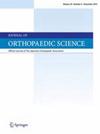日本骨科协会(JOA)恶性骨肿瘤治疗临床实践指南--二次出版。
IF 1.4
4区 医学
Q3 ORTHOPEDICS
引用次数: 0
摘要
背景:日本目前没有治疗原发性恶性骨肿瘤的通用指南。因此,日本骨科协会成立了一个委员会,为临床实践中的医务人员制定原发性恶性骨肿瘤的适当诊断和治疗指南:该指南是根据《明治临床实践指南制定手册2014》和《明治临床实践指南制定手册2017》制定的。日本骨科协会骨与软组织肿瘤委员会成立了指南制定和系统性审查委员会,成员来自骨科专家,领导骨与软组织肿瘤的诊断和治疗。由于多学科治疗的重要性,儿科医生、放射科医生和病理诊断医生也加入了这两个委员会。根据原发性恶性骨肿瘤的诊断和治疗算法,选择了重要的决策点,并确定了临床问题(CQ)。推荐强度分为两级,证据强度分为四级。根据 70% 或更多投票者的一致意见,选定了发布的建议:结果:指南制定委员会审查了临床算法中的重要临床问题,并选择了 22 项 CQ。系统审查委员会审查了每个 CQ 的相关证据,并由专家添加了临床价值判断。最终,发布了 25 个问题,并确定了每个建议的文本:由于原发性恶性骨肿瘤非常罕见,因此缺乏基于随机对照试验的有力证据,建议不能适用于所有患者。在临床实践中,对原发性恶性骨肿瘤患者的适当治疗应根据每个病例的组织病理学诊断和进展程度,以本指南为参考。本文章由计算机程序翻译,如有差异,请以英文原文为准。
Japanese orthopaedic association (JOA) clinical practice guideline on the management of primary malignant bone tumors - Secondary publication
Background
In Japan, there are currently no general guidelines for the treatment of primary malignant bone tumors. Therefore, the Japanese Orthopaedic Association established a committee to develop guidelines for the appropriate diagnosis and treatment of primary malignant bone tumors for medical professionals in clinical practice.
Methods
The guidelines were developed in accordance with “Minds Clinical Practice Guideline Development Handbook 2014″ and “Minds Clinical Practice Guideline Development Manual 2017". The Japanese Orthopaedic Association's Bone and Soft Tissue Tumor Committee established guideline development and systematic review committees, drawing members from orthopedic specialists leading the diagnosis and treatment of bone and soft tissue tumors. Pediatricians, radiologists, and diagnostic pathologists were added to both committees because of the importance of multidisciplinary treatment. Based on the diagnosis and treatment algorithm for primary malignant bone tumors, important decision-making points were selected, and clinical questions (CQ) were determined. The strength of recommendation was rated on two levels and the strength of evidence was rated on four levels. The recommendations published were selected based on agreement by 70% or more of the voters.
Results
The guideline development committee examined the important clinical issues in the clinical algorithm and selected 22 CQs. The systematic review committee reviewed the evidence concerning each CQ and a clinical value judgment was added by experts. Eventually, 25 questions were published and the text of each recommendation was determined.
Conclusion
Since primary malignant bone tumors are rare, there is a dearth of strong evidence based on randomized controlled trials, and recommendations cannot be applied to all the patients. In clinical practice, appropriate treatment of patients with primary malignant bone tumors should be based on the histopathological diagnosis and degree of progression of each case, using these guidelines as a reference.
求助全文
通过发布文献求助,成功后即可免费获取论文全文。
去求助
来源期刊

Journal of Orthopaedic Science
医学-整形外科
CiteScore
3.00
自引率
0.00%
发文量
290
审稿时长
90 days
期刊介绍:
The Journal of Orthopaedic Science is the official peer-reviewed journal of the Japanese Orthopaedic Association. The journal publishes the latest researches and topical debates in all fields of clinical and experimental orthopaedics, including musculoskeletal medicine, sports medicine, locomotive syndrome, trauma, paediatrics, oncology and biomaterials, as well as basic researches.
 求助内容:
求助内容: 应助结果提醒方式:
应助结果提醒方式:


